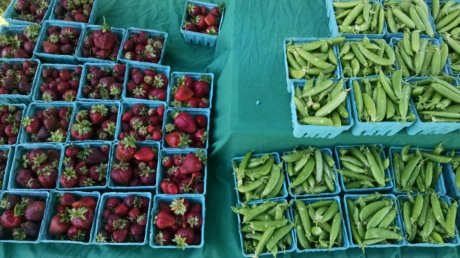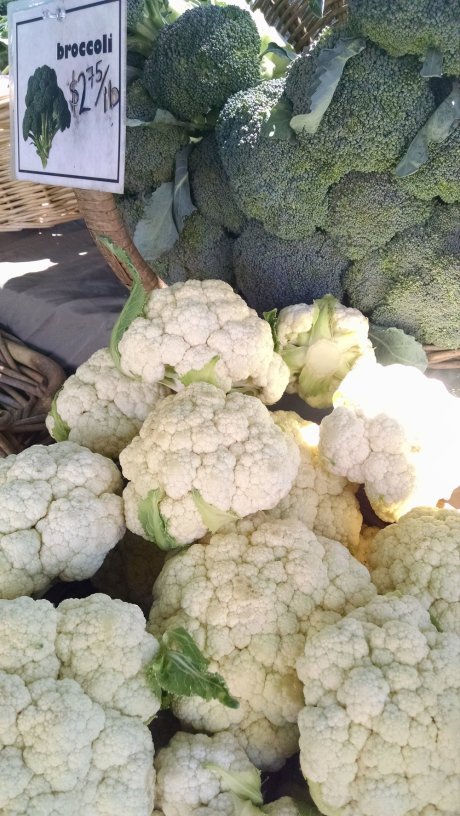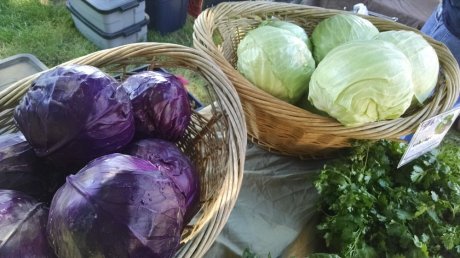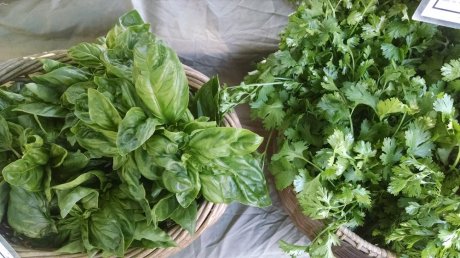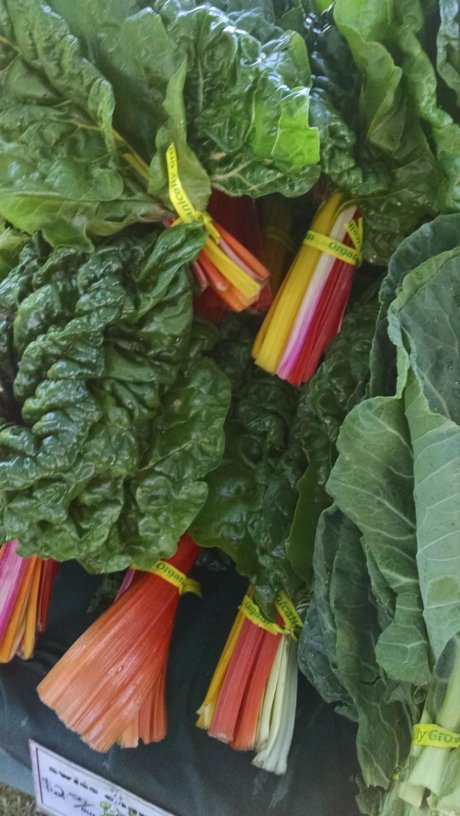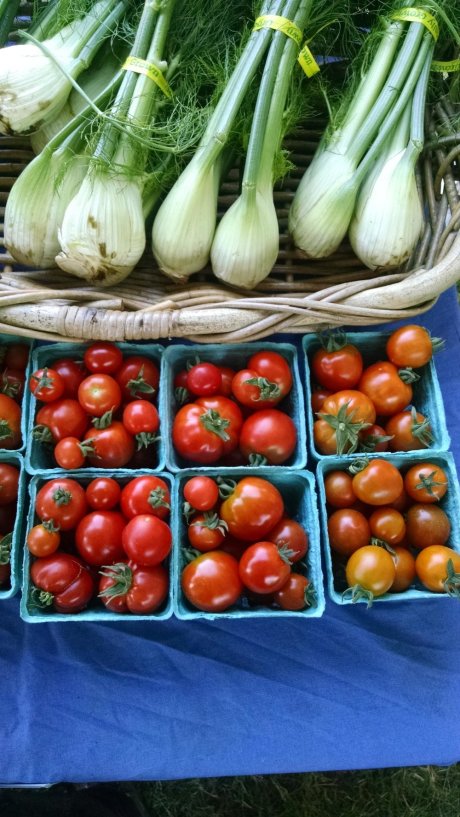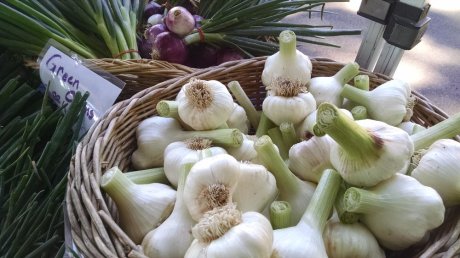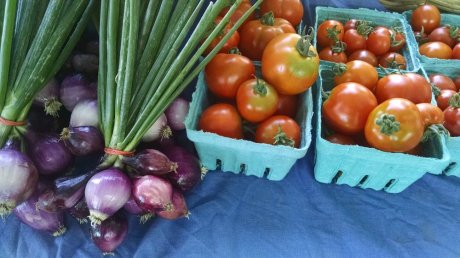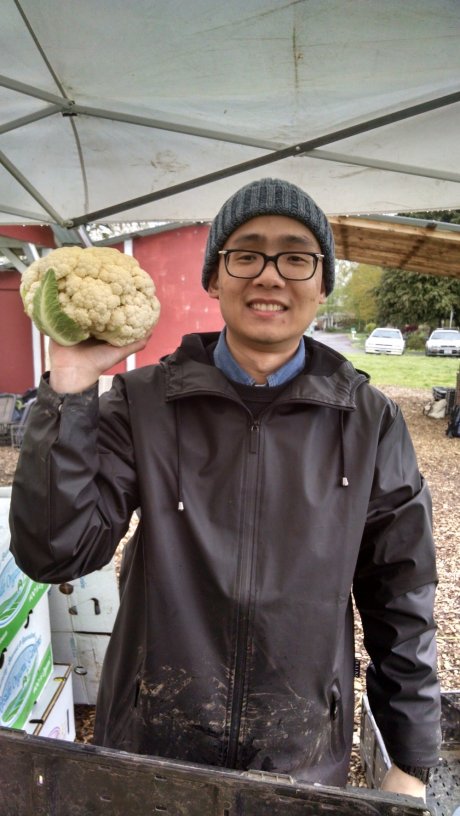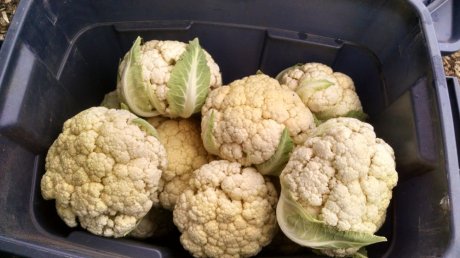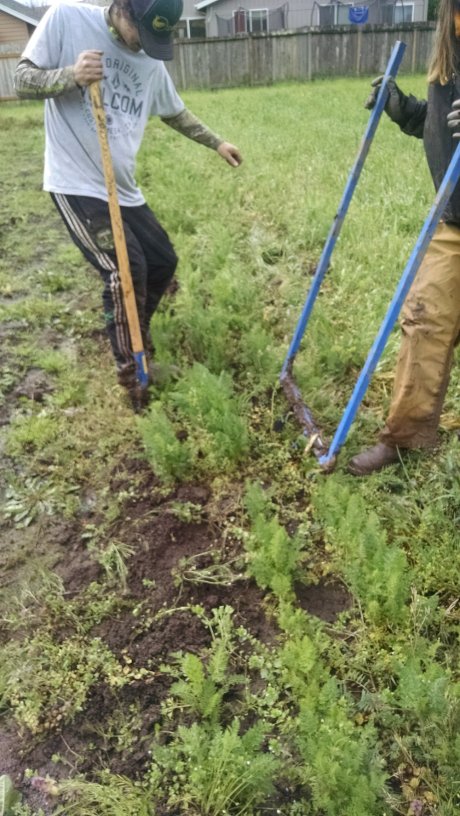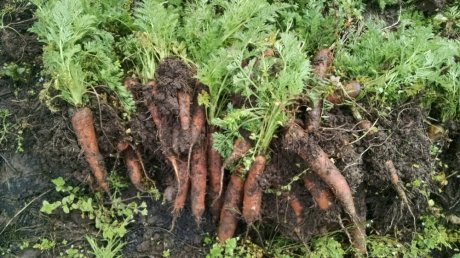It’s rare that I get to have my hands in the dirt on a single project for more than a few minutes. I’m running from one crop to the next, harvesting a dozen or two bunches here and there, checking in on small groups scattered around the farm and coordinating whatever washing and processing needs to happen up front. I love that rhythm, of never getting stuck in one project too long. It can also feel frenetic sometimes, and even isolating since my conversations are usually cut short by the next task at hand.
So on mornings like this, when we’re just staff and interns and a short list of long harvests, I sink in. Literally, in this case. Alex, Phil, and I spent the better part of an hour harvesting the last sections of carrots in our second planting: one person sink the broadfork in parallel to one of the carrot rows, loosen them up, move down the bed, and continue on different areas to gradually unearth a large section. We pull them out into messy piles, snap off the greens two by two, and toss the carrots into large crates that fill slowly, steadily, heavily as we work.
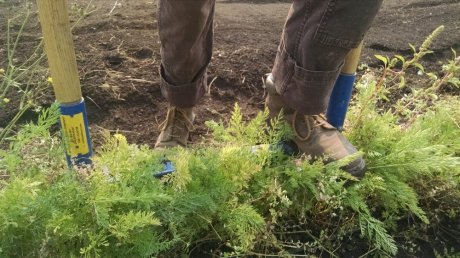
Broadforking the carrot bed
Phil, who recently bought a house with his partner in Junction City, jokes about his inability to relax– there’s so much to do to turn the place into his vision!– and how his days off feel better when productive. Alex, who was recently gifted a car from her best friend, is learning to drive for the first time and blown away by how intense and difficult it is so far. They both came here to get their foot in the door of agriculture and outdoor work– Alex after five years as a youth farmer and then a year in the food service industry, Phil as an avid hiker in his mid thirties who’s always ended up with cubicle jobs– and are starting to think more seriously about how to move forward when this internship ends in October. Nursery work? Landscaping? Cannabis? Farmers markets? It’s a pretty wide world open to them, and though not the best timing to find agricultural work, I’m confident they’ll both a find a way to continue.
We finish the bed: seven full crates of orange and rainbow color carrots. The rest of the morning and afternoon we’re spraying them, washing other produce, doing enough harvest to fill the coolers. Phil stays on carrots for hours, until we’re finally nearing the finish line and he requests to join in on something else. I’m impressed he was into it for that long in the first place!
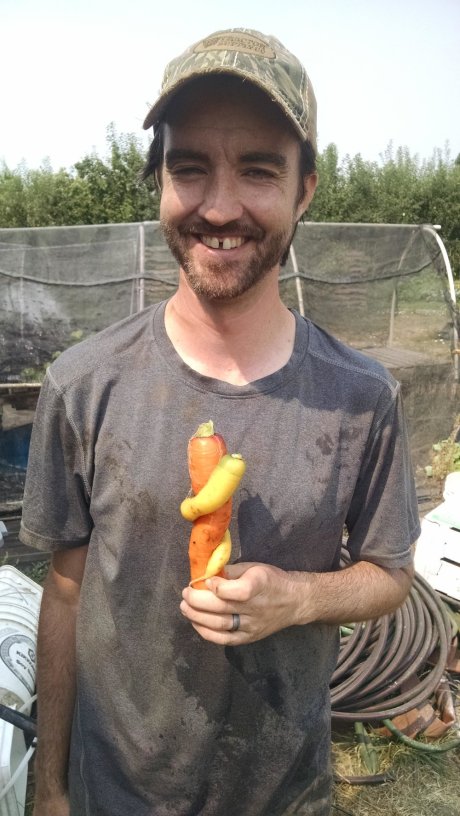
Phil with some super cool rainbow carrot lovers
So at the end of the day, Michael’s out in the beans with Phil and Alex, Rebecca and Ted are sorting tomatoes in the farm stand, and I’m cleaning up our harvest world while Kadyn finishes sorting those carrots. The standards have dropped since the bed got hit hard with carrot rust fly maggots, and the next plantings are sparse because of weed pressure. So I show her the current standard: rather than our normal flawless roots, a little brown spot is fine, let those small imperfections slide, but we still can’t sell anything with more than a spot or two.
Kadyn and Rebecca, who joined us just for the summer, are suddenly about to end their internships. Two more weeks. Rebecca is going back to college on the east coast, and Kadyn, who was really unsure of her plans when she started, is moving briefly back to her parents’ in Bend. Then on to Europe for a graduation trip in the fall, and after the holidays, hopefully back to Spain to work and volunteer. With her strong convictions and mature thoughtfulness around how to approach her next step in life, Kadyn catches me off guard with my head in the muddy sinks. Her path is different from Alex’s, or Phil’s, or mine, or anyone else’s in the world, and it suddenly feels like such a privilege to share this brief period that our paths intertwine. She’s picking up carrot after carrot, sorting them into different containers bound for different places, and after I quickly show her the standard this week, she doesn’t ask for any more help deciding. If only all these pesky life decisions could be as simple as today’s carrot daze.

